Cultural Currency 26: Takezaki Kazuyuki@See Saw Gallery + hibit
“Variante” of the simulacre
By Shimizu Minoru
2024.08.17
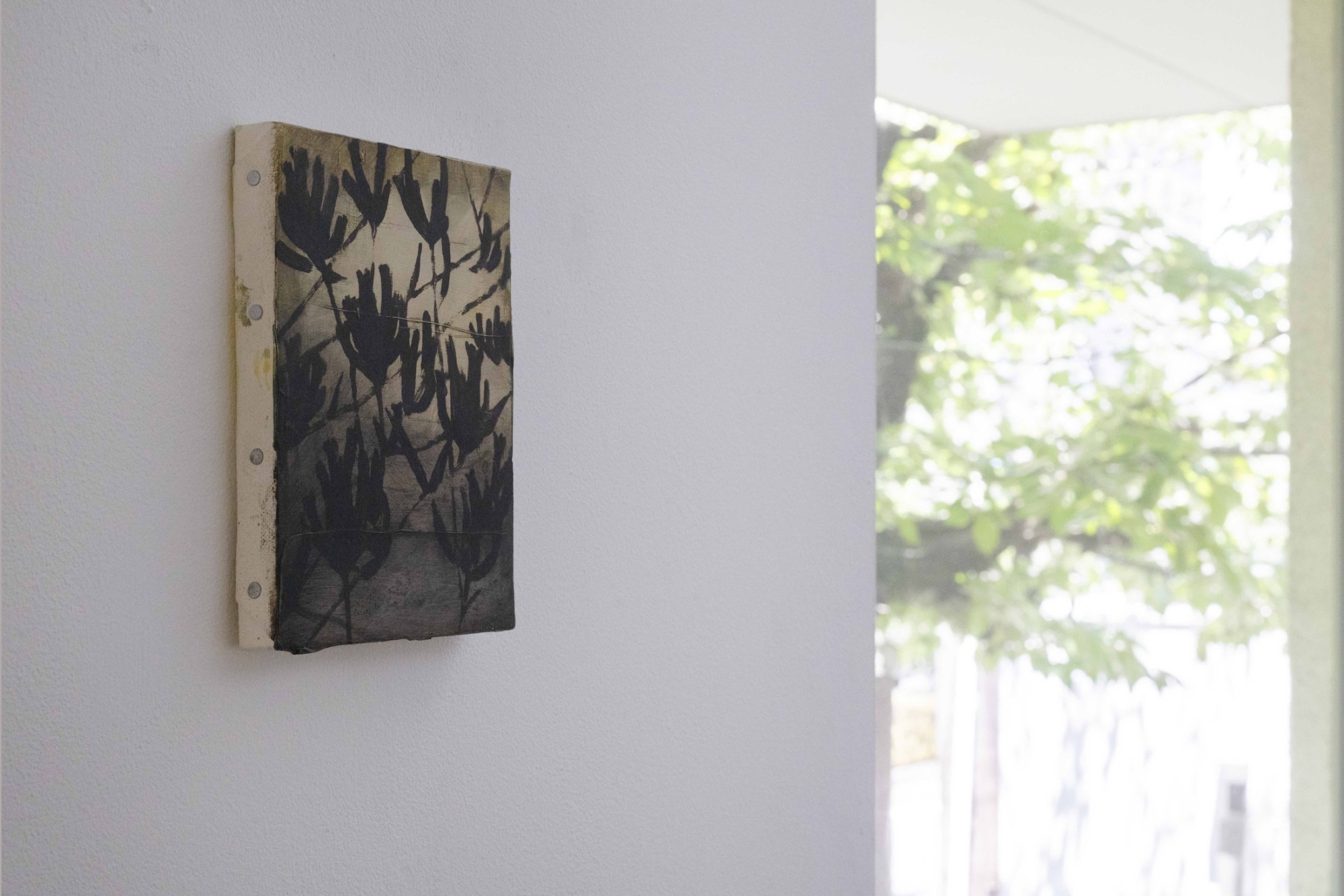
Courtesy of the artist and MISAKO & ROSEN
All photos: Tamotsu Kido
Since when had Takezaki Kazuyuki, an artist I thought I knew for a very long time, been exploring a world like this? The emergence of an outstanding painter was made clear in this exhibition of posthumous works.
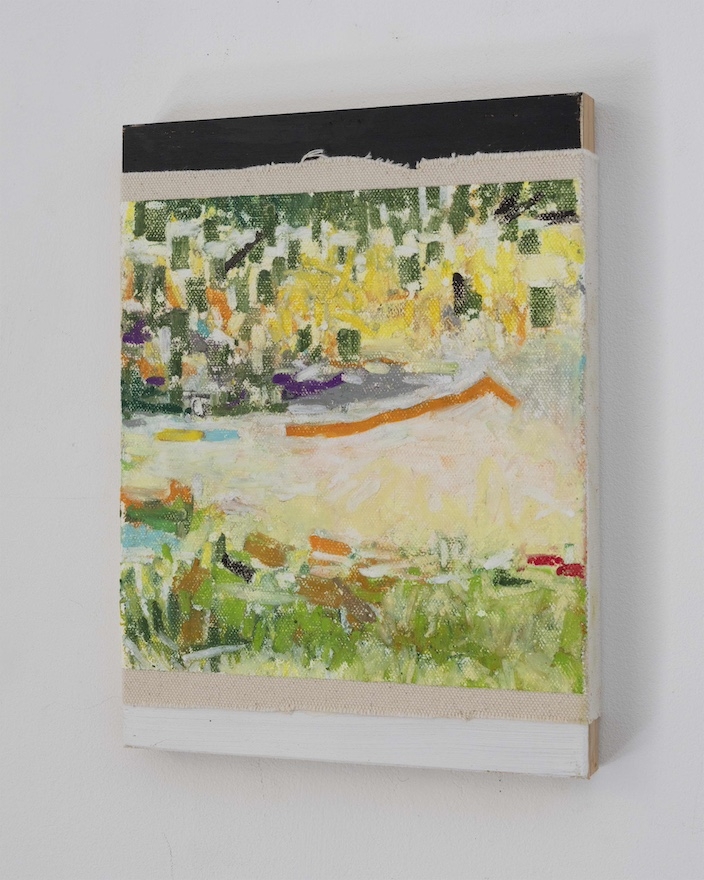
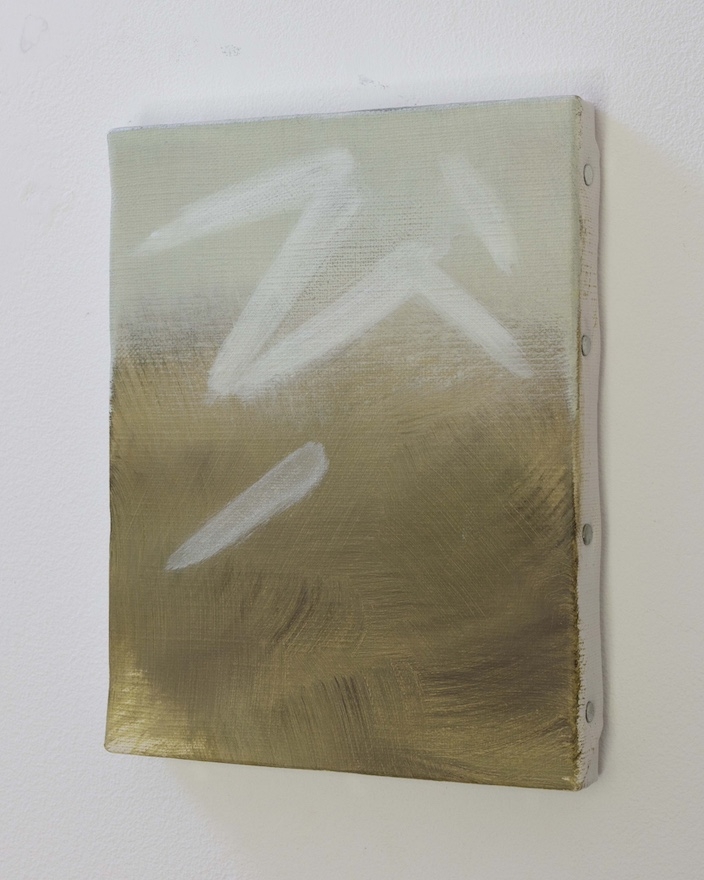
 It goes without saying that today we are living in an even more extensively archived society, and that the illusion that information from every period seems to be arranged equally on a timeless plane has become commonplace. In an age in which déjà vu is widespread, a qualitative change is occurring in the reuse of “fragments of the past.” Reuse no longer entails copying original artworks of the past, as the reuse of fragments of the kind that were common in the past or may have existed but cannot be identified as specific artworks has become the mainstream. Yes, I am talking about copies for which there are no originals, or simulacra.
It goes without saying that today we are living in an even more extensively archived society, and that the illusion that information from every period seems to be arranged equally on a timeless plane has become commonplace. In an age in which déjà vu is widespread, a qualitative change is occurring in the reuse of “fragments of the past.” Reuse no longer entails copying original artworks of the past, as the reuse of fragments of the kind that were common in the past or may have existed but cannot be identified as specific artworks has become the mainstream. Yes, I am talking about copies for which there are no originals, or simulacra.

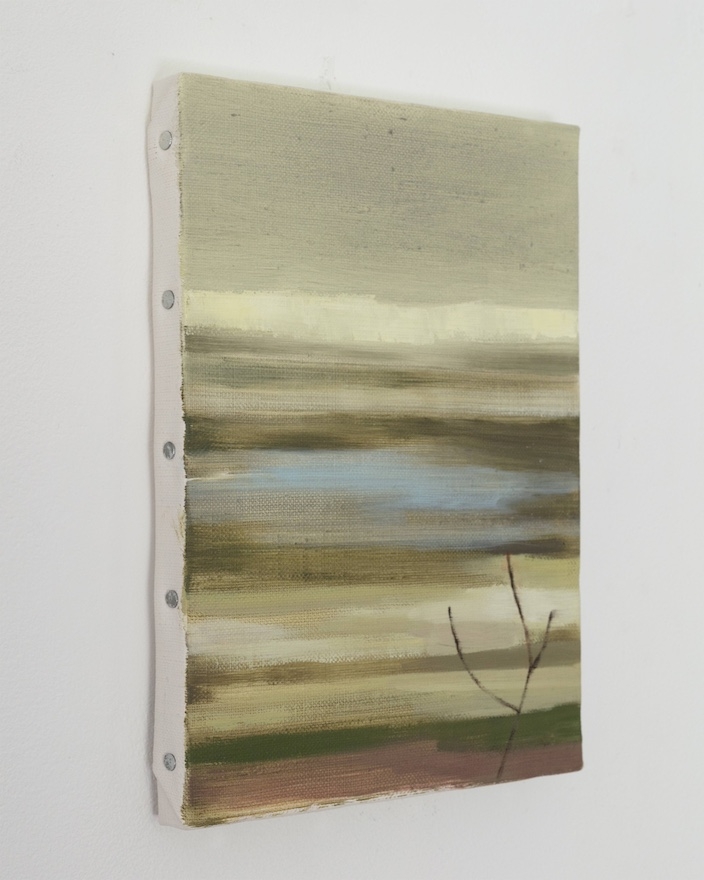
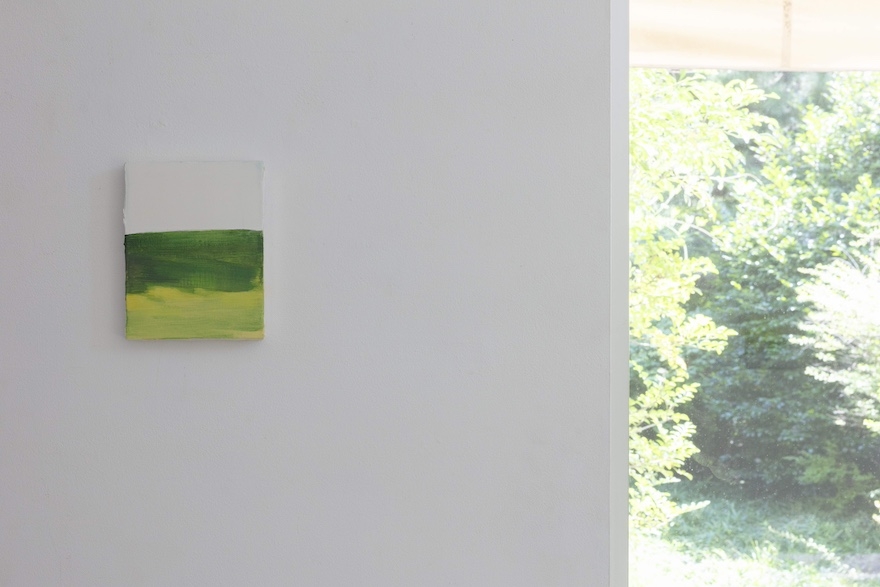 As such, contemporary painting is none other than the reconstitution of elements of the kind we might have seen somewhere—simulacra of the past. Does this mean, then, that the basic approach is cynicism (there is no shortage of such artists)? No, the issue is the extent to which painting as the recycling of simulacra can take on the ultimate mark of difference that is the life of the artist concerned (How did they live? How did they die?). People are born, experience various things during their lives, and finally die. Many of these lives, deaths, and various experiences are ordinary and of the same kind, but as long as they are lived by individuals, they are all different. The practice of art depends on creating “difference” from these “same things.” Like Proust’s protagonist, the painter must “rediscover” their own painting.
As such, contemporary painting is none other than the reconstitution of elements of the kind we might have seen somewhere—simulacra of the past. Does this mean, then, that the basic approach is cynicism (there is no shortage of such artists)? No, the issue is the extent to which painting as the recycling of simulacra can take on the ultimate mark of difference that is the life of the artist concerned (How did they live? How did they die?). People are born, experience various things during their lives, and finally die. Many of these lives, deaths, and various experiences are ordinary and of the same kind, but as long as they are lived by individuals, they are all different. The practice of art depends on creating “difference” from these “same things.” Like Proust’s protagonist, the painter must “rediscover” their own painting.
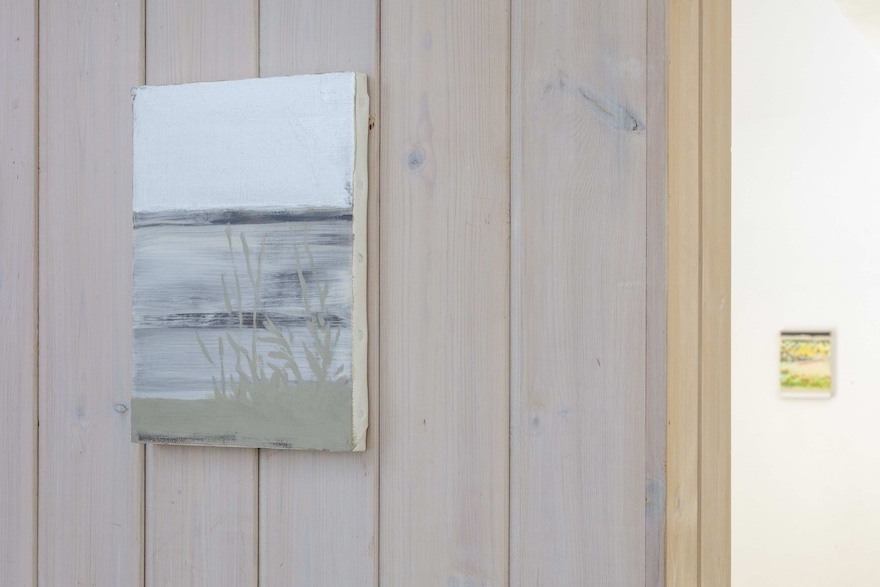
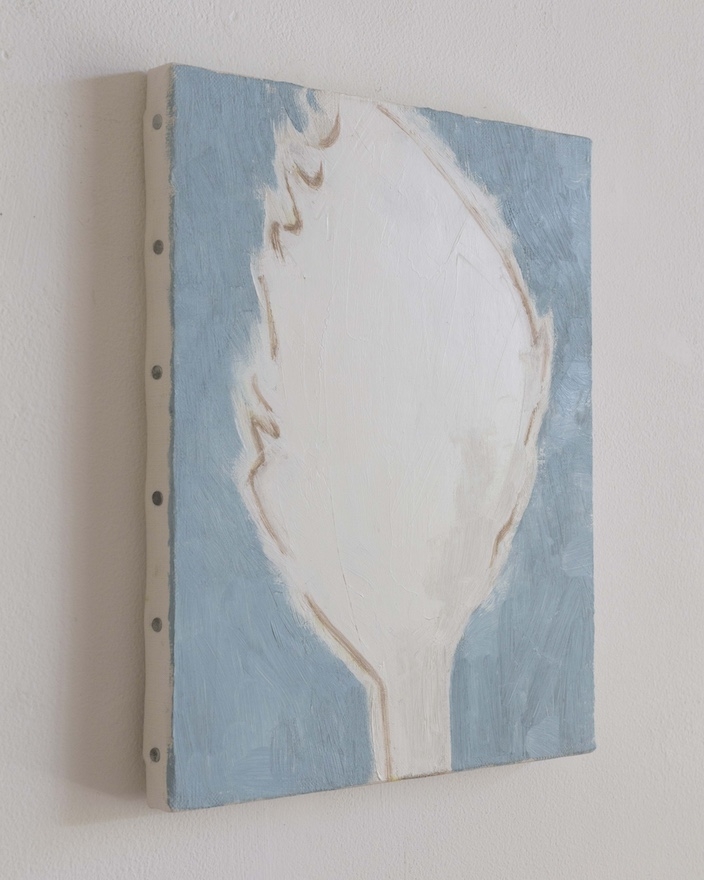 Adorno called this “same, single” musical outward form the “characteristic element” (charakter). In Mahler’s case, it covered various types of music chosen irrespective of status from the world of music in his time, and often with a degree of popularity that made serious classical music fans frown. In some cases, the source of the quotation or reference in the characteristic element was clear, but often it was a simulacrum of “something something music” (military or naval band, lullaby, folk, children’s, popular, new German music style, Postromantic, Viennese classical, etc.). In other words, according to Adorno, Mahler’s music was a pseudomorph made up of various simulacra that changed by means of the variant technique and temporarily combined with each other, and in which the “same, single” things kept being differentiated moment by moment. “The fact of the brokenness of his music … is not least to be found in the fact that nothing in his music can be taken literally in a musical sense. Understanding Mahler means understanding the subtle, the double-bottomness….”1
Adorno called this “same, single” musical outward form the “characteristic element” (charakter). In Mahler’s case, it covered various types of music chosen irrespective of status from the world of music in his time, and often with a degree of popularity that made serious classical music fans frown. In some cases, the source of the quotation or reference in the characteristic element was clear, but often it was a simulacrum of “something something music” (military or naval band, lullaby, folk, children’s, popular, new German music style, Postromantic, Viennese classical, etc.). In other words, according to Adorno, Mahler’s music was a pseudomorph made up of various simulacra that changed by means of the variant technique and temporarily combined with each other, and in which the “same, single” things kept being differentiated moment by moment. “The fact of the brokenness of his music … is not least to be found in the fact that nothing in his music can be taken literally in a musical sense. Understanding Mahler means understanding the subtle, the double-bottomness….”1
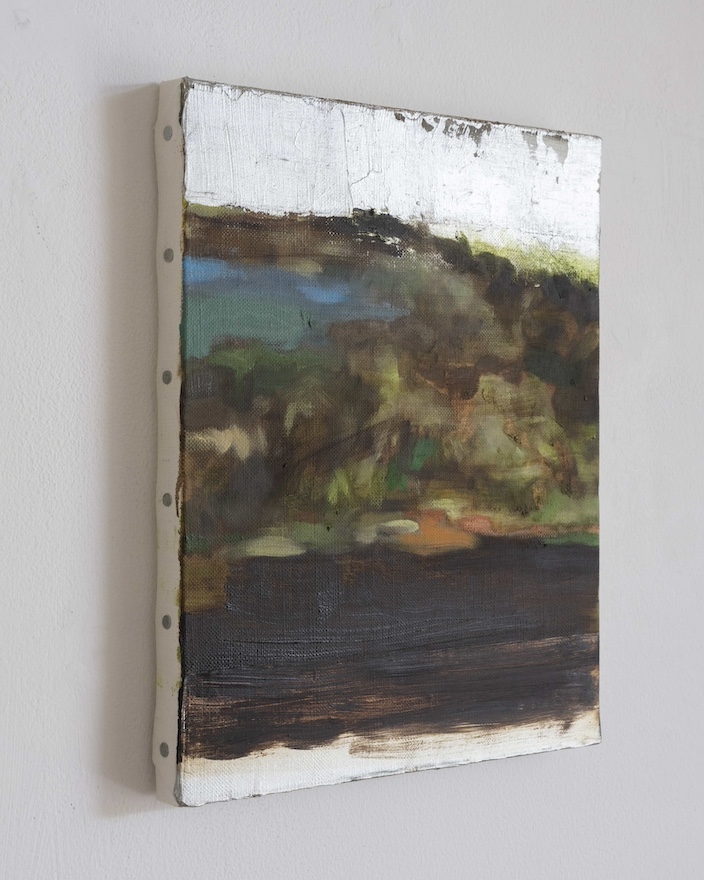
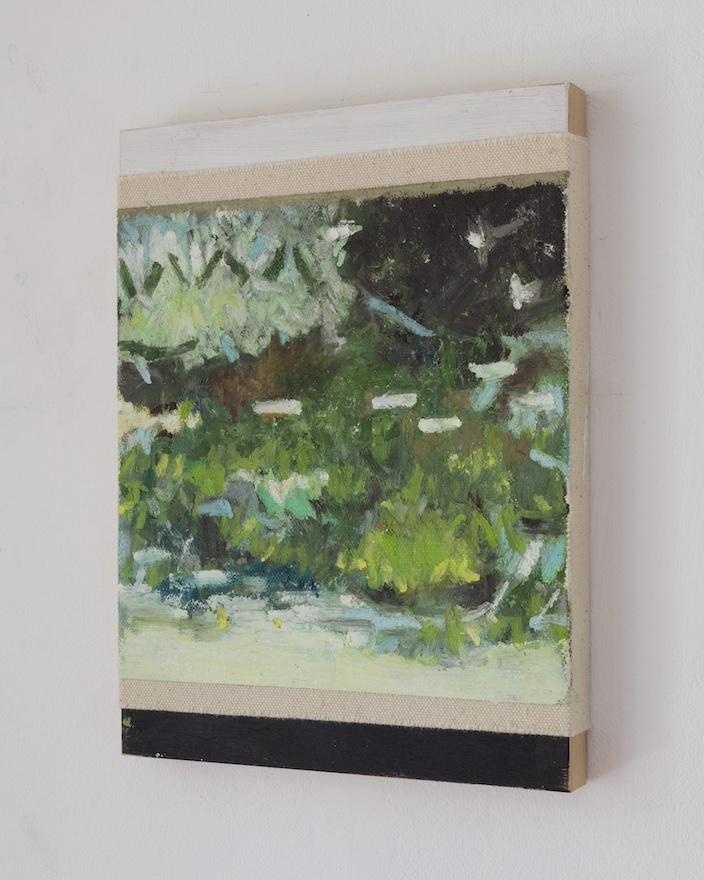 Takezaki’s style whereby the multiple parameters that make up painting (touch, color, layer, matière, motif, and art historical memories of these) operate simultaneously, from which paintings imbued with ambiguity in the form of a peculiar balance emerge, calls to mind the works of Sugito Hiroshi or Ikeya Tamotsu, who has also exhibited at the See Saw Gallery. However, unlike Sugito, whose choices of motif and framing/presentation are quite deliberate and theatrical, and Ikeda, whose works are more abstract and who has little concern for motifs, the motifs in Takezaki’s paintings are essentially limited and personal, and to this extent he could also probably be compared to Kuwahara Masahiko. In any event, in Takezaki’s paintings, the simulacra of “landscapes” have turned into variants of Takezaki himself via the artist’s life. This is extremely rare (and is different from being happy to withdraw to the countryside and apply oneself to one’s art practice). Are there masterpieces among this series of landscapes (as far as I can tell from looking at the Misako & Rosen and 47 Canal material, it seems most of them are small works), and what will become apparent after looking over all his series? In the near future, I hope a museum somewhere (the Museum of Art, Kochi, Takezaki’s hometown!) stages a retrospective.
Takezaki’s style whereby the multiple parameters that make up painting (touch, color, layer, matière, motif, and art historical memories of these) operate simultaneously, from which paintings imbued with ambiguity in the form of a peculiar balance emerge, calls to mind the works of Sugito Hiroshi or Ikeya Tamotsu, who has also exhibited at the See Saw Gallery. However, unlike Sugito, whose choices of motif and framing/presentation are quite deliberate and theatrical, and Ikeda, whose works are more abstract and who has little concern for motifs, the motifs in Takezaki’s paintings are essentially limited and personal, and to this extent he could also probably be compared to Kuwahara Masahiko. In any event, in Takezaki’s paintings, the simulacra of “landscapes” have turned into variants of Takezaki himself via the artist’s life. This is extremely rare (and is different from being happy to withdraw to the countryside and apply oneself to one’s art practice). Are there masterpieces among this series of landscapes (as far as I can tell from looking at the Misako & Rosen and 47 Canal material, it seems most of them are small works), and what will become apparent after looking over all his series? In the near future, I hope a museum somewhere (the Museum of Art, Kochi, Takezaki’s hometown!) stages a retrospective.
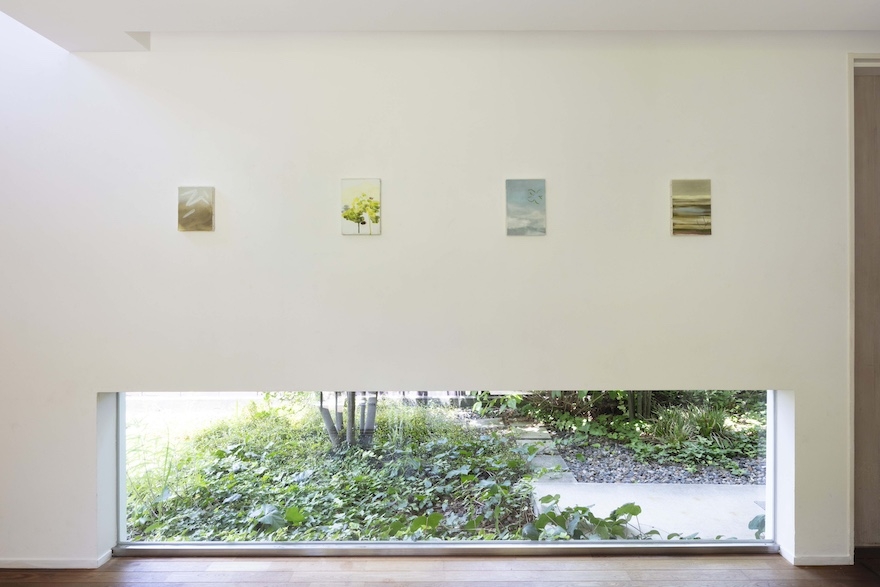 ——————————–
——————————–
1. Theodor W. Adorno, “Zu einem Streitgespräch über Mahler,” Gesammelte Schriften, Band18 (Frankfurt: Suhrkamp, 1984), 245. Translated from the German by Shimizu.
——————————–
Shimizu Minoru
Critic. Professor, Doshisha University.
Mr. Takezaki Kazuyuki passed away on June 22, 2024. We offer our deepest condolences.
“Takezaki Kazuyuki” is being held at See Saw Gallery + hibit through September 14.

Board / Table, 2022, oil pastel, acrylic, canvas, panel, 26×19.5cm
*
In an effort to encourage (?) him, Baudelaire famously commented in a note to Manet that, unlike such past masters as Chateaubriand and Wagner, “You are merely the first in the decrepitude of your art” (Vous n’êtes que le premier dans la décrépitude de votre art). Here, “the first in the decrepitude of [painting]” equates to a recognition that all of the past that was being archived by means of reproduction technology (photography) was the premise of creation, and that unless the definition of the word “painting” was completely changed, new painting would be impossible, and the only thing painters could do was reuse fragments of the past (variation, collage, montage, etc.).
Untitled, 2023, oil on canvas, 17.5×14cm

Untitled, 2021, oil on canvas, 22.7×16cm

Untitled, 2022, oil on canvas, 22.7×16cm

Untitled, 2022, oil on canvas, 22.7×16cm

Untitled, 2022, oil on canvas, 18×14cm
*
The Manet story also probably applies to Gustav Mahler. In other words, all of the past that was being archived by means of reproduction technology (recording) was the premise of composing, and unless the definition of the word “music” was completely changed, new music would be impossible and the only thing composers could do was reuse fragments of the past. Seeking to describe in a single word the distinguishing feature of the kind of reuse employed by Mahler, Adorno came up with “variant” (variante). Variants are not variations. In variations, the outward form of the music keeps changing while the core consisting of the same harmonic progression is preserved. In variants, while the outward form of the music sounds almost identical, details of its inner parts keep changing. If variations involve unrestricted changes based on the same, single foundation, then variants offer the freedom to alter the actual state of affairs inside “the same, single” shell.
Untitled, 2022, oil on canvas, 22.7×16cm

Untitled, 2021, oil on canvas, 27.5×22cm
*
Takezaki Kazuyuki’s paintings depict almost exclusively the landscape around him with a subtle use of color and a touch that is dense without being overly meticulous, the groups of small works calling to mind aspects of the quiet, slow life of the Japanese countryside—towns fading from view in the twilight, late summer skies, gardens rendered extemporaneously in pointillist fashion, flowers illuminated from behind, grasses on the edges of ponds—beautiful and charming. However, due to their size, which is too small to keep the viewer immersed, these landscapes simultaneously appear as “landscapes.” In other words, they appear as abstractions and symbols, as rough color plane compositions, as layers applied to silvery backgrounds, and as masked canvases stuck to panels the tops and bottoms of which have been painted different colors. And, unusually in recent times, the canvases are stretched with nails, the nailheads either painted over with primer, or left exposed. As far as contemporary works are concerned, being “paintings” as well as paintings could be called a matter of course, but as well as this the backlit flowers are withered black, the water in the ponds is muddied black, no lights can be seen in the towns, and the quiet landscapes lack the chirping of birds or insects. One could say that these paintings are devoid of the kind of idyl with which city dwellers empathize, and that the barren nature of the Japanese regions, including new housing developments, the building over of natural woodland near populated areas, and the destruction of ecosystems through the use of agricultural chemicals, is presented with a kind of resignation.
Untitled, 2023, oil on canvas, 27.5×22.5cm

Board / Table, 2021, oil pastel, acrylic, canvas, panel, 26×19.5cm

Installation view
1. Theodor W. Adorno, “Zu einem Streitgespräch über Mahler,” Gesammelte Schriften, Band18 (Frankfurt: Suhrkamp, 1984), 245. Translated from the German by Shimizu.
——————————–
Shimizu Minoru
Critic. Professor, Doshisha University.
Mr. Takezaki Kazuyuki passed away on June 22, 2024. We offer our deepest condolences.
“Takezaki Kazuyuki” is being held at See Saw Gallery + hibit through September 14.